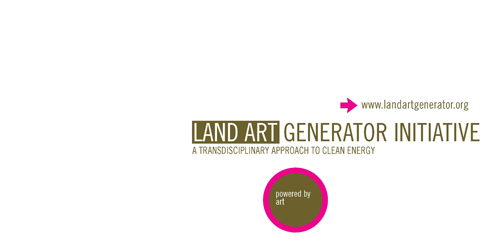
Paper presented at the Aarhus University Conference THE ARTWORK BETWEEN TECHNOLOGY AND NATURE held at the Statens Museum for Kunst in Copenhagen, January 21-23. Reproduced here, slide for slide…

In 1909, the Futurist manifesto[1], along with other contemporaneous movements, gave added momentum to the sentiment of the triumph of man over nature. Europe was gripped by a collective progress-euphoria, as it reveled in the excesses of its scientific and industrial triumphs.
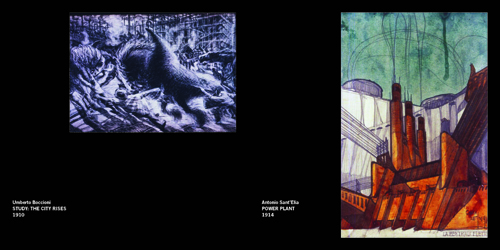
It was that same year that humans reached the North Pole, and 6 years previously the first successful flight had heralded victory over the sky. The world had been mapped and cataloged and ideas about time and space were being challenged. This euphoria of progress is an addiction from which 100 years later we are still recovering, the abuses of which have taken their toll on our history, on our sanity and on the delicate vessel of our collective habitation.
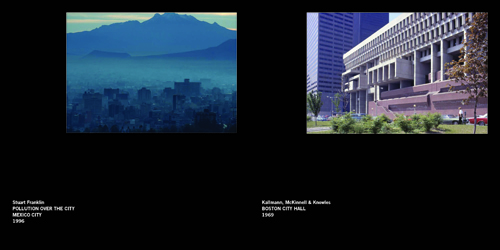
The manifesto was a seduction to the thrilling and fleeting ecstasies that come from narcissistic cultural self-evaluation, environmental destruction, squandering of resources and the waging of war.
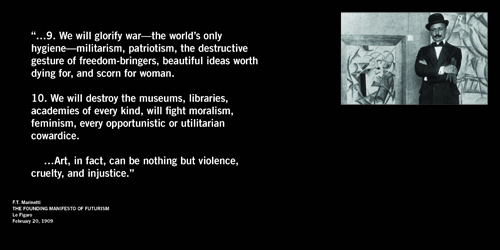
Above all, its lesson is the ability of art to contribute to change in the world. The change was inevitable and of course, it was not all bad. Like most vices, it would have been better if practiced in studied moderation.
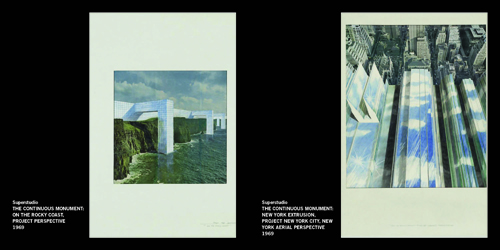
While declaring the greatness of speed and progress, Futurism also equally declared the greatness of humanity. But what it did not bring into the fold of its political message was a concern for the well being of the planet or notions of “humanity” as being defined by a sense of empathy. Machines, as glorified in many genres of 20th century art, are without compassion.
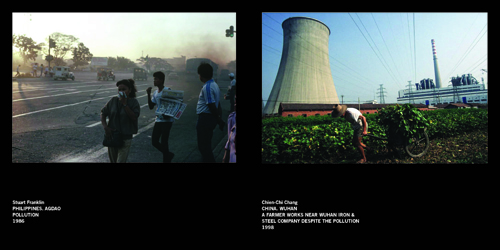
The intellectual profundity of the idea of “Greatness-In-Newness” that was born of those first decades of the 20th century was so strong as to influence the direction of political revolutions. In art, “Greatness-In-Newness” played a critical role in nearly every categorized movement of the past century.
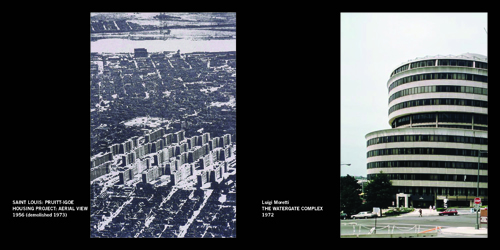
On the positive side of the bargain, this grand movement that has seen various iterations and reinterpretations over the last century has instilled in us a sense of purpose by questioning the nature of art. And it has continuously awed us with our ability to invent spectacular otherworldly creations by fusing together disparate existences into wonderful or shocking manifestations.
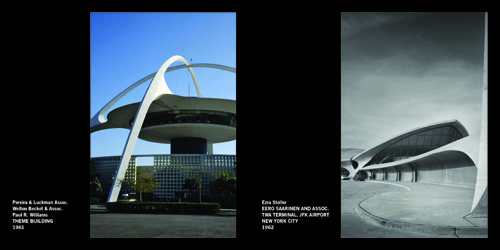
This grand manifesto has reached what could be deemed its heated climax in the city of Dubai, where the authors currently reside.
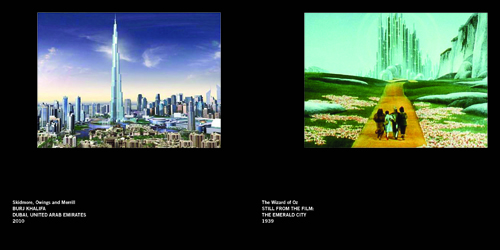
On the negative side of the bargain, artistic glorification of mankind’s triumph over nature has arguably contributed, if not to the neglect of our obligation to nature, at least to a distraction from it.
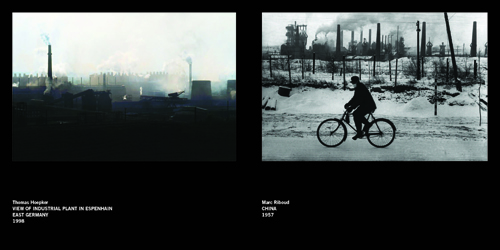
In the meantime, we have arrived 100 years later, in 2010, at a desperate place in which an updated vision of our future may have no place for human life at all on a planet that has been heated up by our combustion and raked clean by our endless mining for metals and fuels in our insatiable and un-moderated quest for speed and convenience.
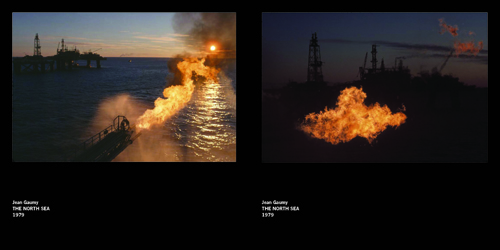
This all said, if we are to heal this planet and bring ourselves back from the brink, we are not going to do it without technology.
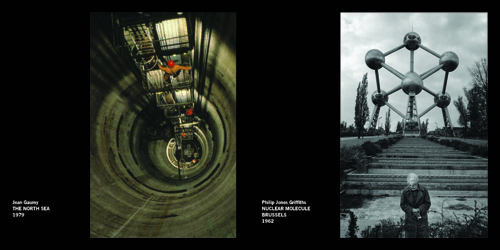
Today art has a vital role to play, but now with a memory of the potential harming effects of human behavior on the delicate balance of the natural biosphere.
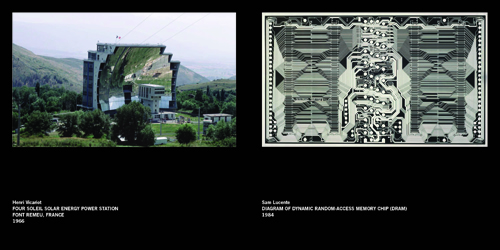
Technology can be glorified and used in art with a new moral purpose.

A countermeasure of serious import to the ideas of “Progress for the Sake of Progress” and the “Greatness In Newness” has been the dawning awareness, since the middle of the 20th century[2], of the serious situation that our addiction to unabashed industry and the fast life of unbridled consumption has placed us—and the planet.
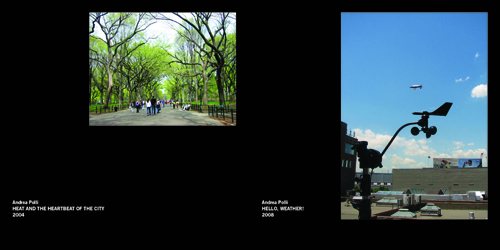
Artists have been pivotal in expanding this awareness to the critical mass required for action. In no small part this has been done through art that employs technology.
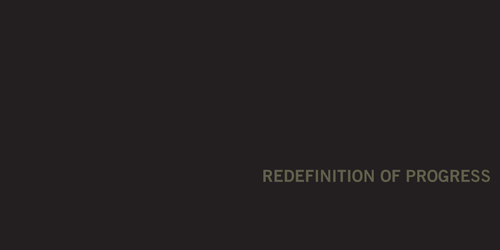
The practice of constructive or didactic forms of art is always evolving in its complex relationship to society. In the past few decades it has expanded its moral radius to include not just human rights and political equality but also animal rights and environmental protection. The success of this new awakening is apparent in the overwhelming numbers of people who have been affected by art and activism.
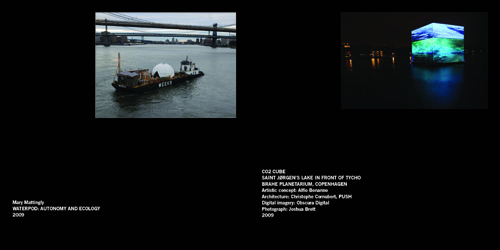
It can be seen in the symbiotic existence of science and art at international conferences on renewable energy and climate change[3]. Millenium Art and the RSA Arts and Ecology’s are two examples of groups that organized work on display last month here in Copenhagen. But this is happening around the world and is constantly expanding.
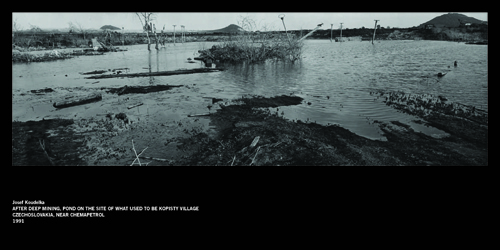
And yet it always seems that there is more to be done. For the tipping point of change is never quite reached sufficiently to affect sufficient political action. To create the necessary universal public enlightenment and trigger a collective unconscious of universal empathy there must be a resounding voice, articulated in a manner that surpasses the limitations of language. Moreover, it must speak to more than the insular communities of artists and critics.

It must also overcome the limitations of didacticism. It is good to teach, but the best methods of teaching have always been demonstrative. How can art ‘do’ as well as ‘be’? Whatever the answer, the ‘do’ing certainly implies a partnership with technology.

A reductive binary view on the relationship between art and technology could be seen as: on one side a glorification of technology over nature and, on the other side, a reaction and dissociation of art from technology. An obvious middle approach that has been developing is to see technology and scientific progress as tools to bring human existence into harmony with the planet, as a steering wheel that can alter our trajectory towards destruction. This approach uses science and research as grist for the artistic process as well as the actual medium for its creation. Art is becoming more and more a partner with technology and science.
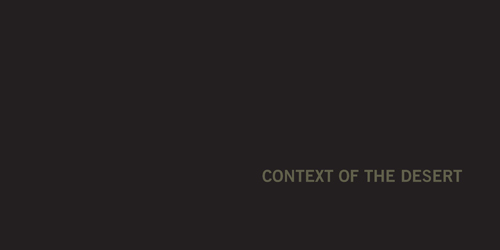
The late 20th century in the United Arab Emirates saw a very fast transition of societal conditions—a shifting from detached settlements to the interconnected cities of glass and steel, shining bastions of international commerce and fashion. Futurism in all of its wanton splendor hit the Arabian Desert, bringing the 100-year cycle to a heated climax in perhaps its boldest statement yet.
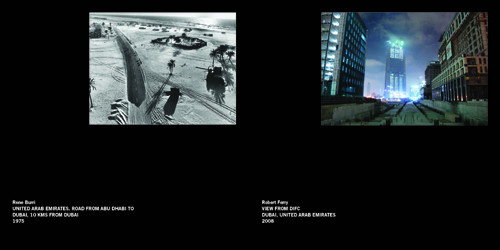
The first decade of the 21st century saw the completion of tens of billions of dollars in development including the tallest building in the world, the most ambitious land reclamation project and the construction of 50,000 hotel rooms. These changes were witnessed by a generation and have been led by a spirit of zeal and determination.
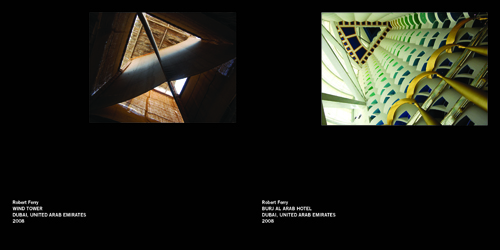
Dubai’s ruler, H.H. Sheik Mohammed bin Rashid Al Maktoum, compares the rapid rise of his city to that of 10th-century Córdoba, the Arab-ruled Spanish city that was at the time Europe’s most enlightened[4].
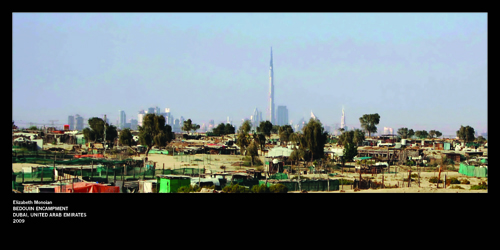
For contemporary Emirati artists, the tension between the worlds of closeness to the earth versus authority over it informs the work they conceive and inspires their creative energy. It is an ever-present muse for the creation of their art. The direct physical, emotional, and religious relationship that Emirati artists have to the land and sky is unparalleled in contemporary Western art. It is an embodied spatial identity that comes from a culture in which individuals have relied on their deep knowledge of the earth and cosmological patterns for survival.
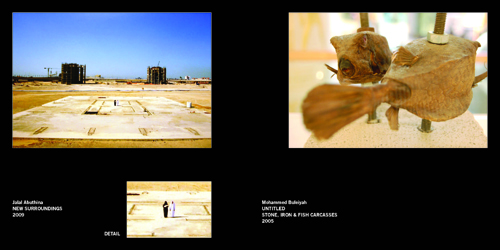
Visual referencing of the land and sky also comes out of Islamic restrictions that preclude the depiction of living creatures. Islamic patterning is an example of the abstract approach to visualization that has occurred over centuries. It is informed by natural patterns and our innate rational quest for the idealization of forms. The exploration of concepts through land art has thus been a natural development for Emirati artists during this period of cultural upheaval.
Emirati Land artist Mohammed Ahmad Ibrahim cites his inspiration in the following words[5]:

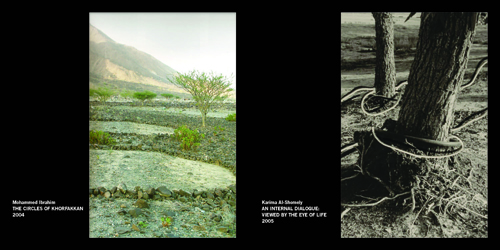
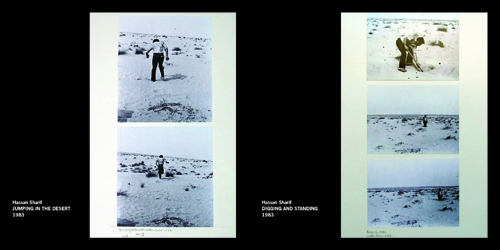
The United Arab Emirates is also synonymous with the new oil discoveries of the mid 20th century and it is therefore a very fitting place to engage the discussion of the finite nature of natural resources.
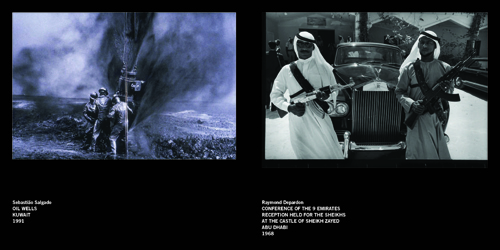
The challenge that confronts the entire world regarding sustainable energy production is well known. According to BP’s website[6],
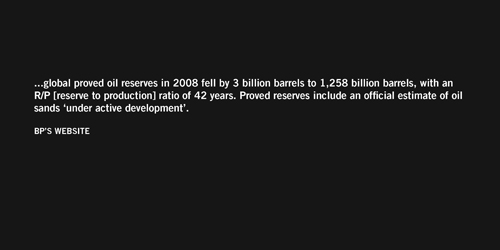
If BP’s own estimates are set at 42 years; we can assume that they have no reason to underestimate their numbers. And to include in the proved calculations the oil sands reserves that will require severe ecological destruction, waste of water resources, and a cost per barrel at least twice that of conventional production is a bit deceptive. We may not have but 25 years until the cost of speculation and the increased energy input required for more complicated recovery make the entire system collapse with instability.
Moreover, we are neglecting to mention the cost on the environment of the decision to combust these remaining 1,258 billion barrels of oil. According to an April, 2009 article in the journal Nature[7]:
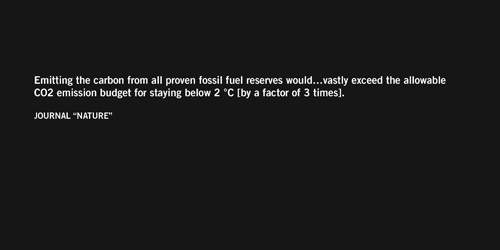
It is in this context that the authors have initiated The Land Art Generator Initiative (LAGI)[8]. In the tradition of land art it merges the natural elements—sky, wind, sun, land, and water—with conceptual beauty. And this time also with technology in the creation of what we call “solution-based art” in the United Arab Emirates.
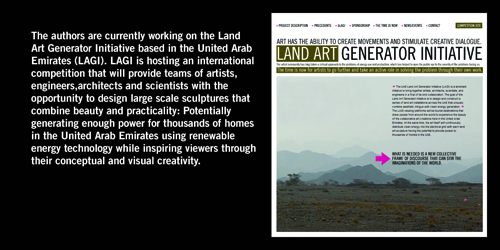
The Land Art Generator Initiative (LAGI) brings together artists, architects, scientists and engineers with the goal of designing and constructing a series of what can be considered land art installations across the UAE that combine aesthetics with clean energy generation.
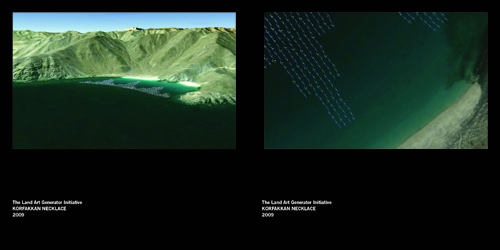
While the works are conceptually engaging, the art itself offers a pragmatic function as well in that it will continuously contribute clean energy into the electrical grid. Each land art sculpture will have the potential to provide power to thousands of homes. This project will bring together the sciences and arts by making aesthetic power plants that inspire the world through their conceptual beauty and their renewable nature.
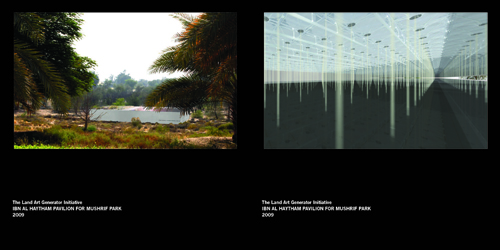
In the scientific and commercial development sectors, research continues on the specifics of harnessing natural sources of renewable energy with a mind toward investment and capital returns. LAGI aims to work on the heels of such important work, but at the same time remove it from the restrictions of market viability.
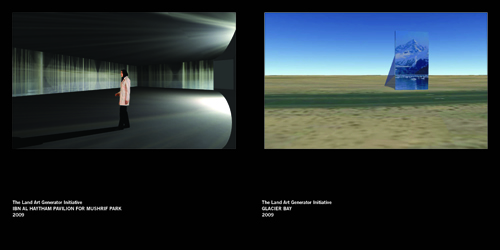
The aim is to actualize public art that fulfills its traditional role while pushing the envelope of technology—progress at harmony with the natural world.
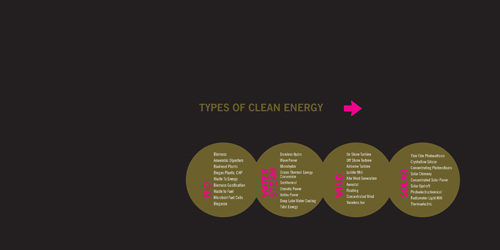
As we move towards our renewable energy future we should recognize the inherent differences that exist between the old and the new means of energy production and the change to built manifestations that consequently follow from this shift. The days of the gas or coal fired power plant at the farthest outskirts of the city come to a close, we will find more and more integration of energy production within the fabric of our commercial and residential communities. The need for large scale exurban generation will always be there, but this will be augmented more and more by urban microgeneration as well.
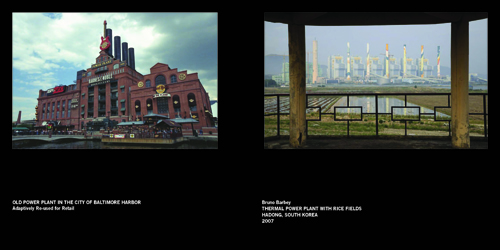
We live in a world that cross-culturally puts a high emphasis on design. As energy generation necessarily comes in closer proximity with the real estate that it powers, issues of aesthetics that drive acceptance are becoming more and more debated.
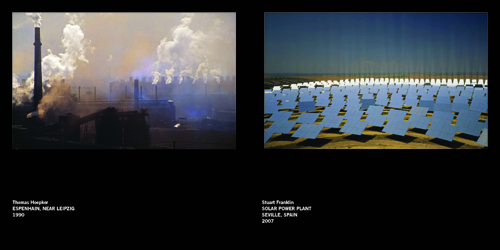
Macro energy installations in the landscape should integrate with their surroundings both visually and environmentally. Micro installations should integrate with the fabric of the urban community. Just as buildings and public art and land art exist as interventions in the fabric of the environment, so must power generation constructions from our green fields to our suburbs to our downtowns react responsibly to their role as permanent additions to our shared experience.
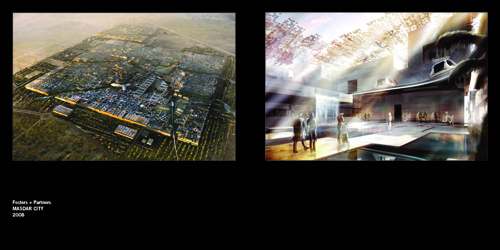
Cities around the world are exploring contained energy self-sufficiency in preparation for the end of conventional oil. Some are starting from scratch and others are aspiring to retrofit themselves to carbon neutrality. Copenhagen is aiming at 2025.

We have on the one hand an ever increasing drive toward buildings and cities that are being designed to run on 100% renewable energy. The design community and city planners are moving in this direction driven by the collective will of society. And on the other hand we have technologies proliferating that are still rather utilitarian in their form such as the standard horizontal axis, three blade wind turbine. And these utilitarian forms are seeing some pushback from individual communities, especially as they come closer and closer to the city. The first warning signs of this are seen in rural mountaintop residential communities and coastal communities but this debate will only get more and more heated as the devices integrate into more dense urban environments.
What is needed in order to bridge the gap (between the larger desire for a renewable future and the community level negative reactions to the application of the systems required for it) is an artistic movement that can set a course towards aesthetic considerations in sustainable infrastructure.

The pressing issues of our time offer an opportunity for artists to take an active role in solving problems through their own work. The Land Art Generator Initiative has the potential to generate not just clean energy, but cultural and political capital—through publicity about the works and educational activities at the sites.
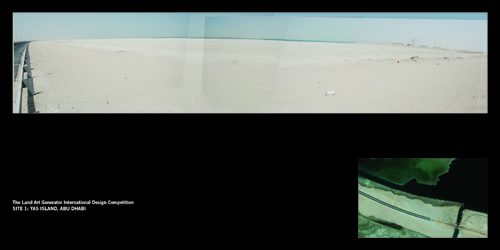
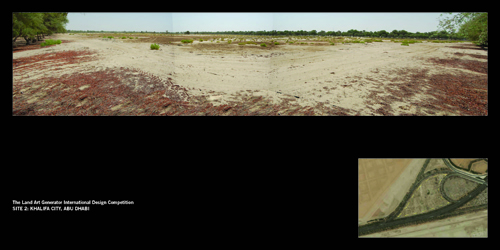

The transdisciplinary model will ensure that project designs are as pragmatic as they are aesthetic, using tested science and technologies as well as testing new technologies.
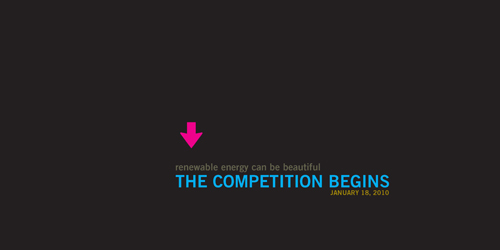
The first step in the process is the international design competition. It was launched recently, on Tuesday, January 18th, at the World Future Energy Summit in Abu Dhabi and runs through June 4, 2010.
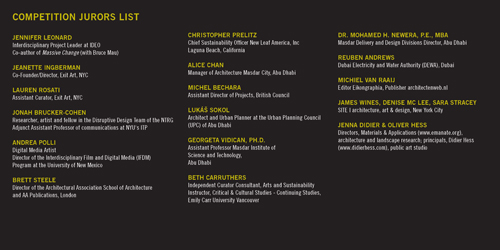
The jury for the competition is comprised of key figures in architecture, art, urban planning, science, engineering and sustainable development. The design guidelines detail three sites from which the participating teams can choose. They were selected because they strike a perfect balance between their natural setting and their proximity to the city.
CONCLUSION
His late Highness Sheikh Rashid Bin Saeed Al Maktoum is quoted as saying[9]:

His words from decades ago show that he clearly understood that oil is a non-renewable resource. These words are revered by the people of UAE today, and they are informing the thoughts and actions of those looking beyond the bigger-taller-faster towers of glass—individuals like Khaled Awad, director of Masdar, a zero-carbon city being built in the desert of Abu Dhabi, who was quoted in January of 2009 in the New York Times saying[10]:
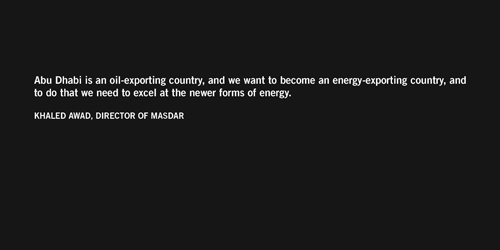
The global energy crisis has the potential to cripple progress, endanger all life forms, and create disaster. If it is not addressed today, it will leave unimaginable devastation in the future. The warning signs are nowhere more apparent than in the UAE.
The time is now for creative thinking about solutions that can provide localized production of energy without fossil fuels. And the oil and sun-rich deserts of Arabia offer a venue for transformation, perhaps unlike anywhere else in the world.
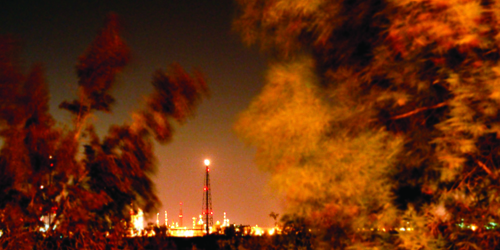
References:
1. The Founding and Manifesto of Futurism, F.T. Marinetti; (Paris) Le Figaro, February 20, 1909
2. Books such as those listed below began to make an impact on popular culture:
La technique ou l’enjeu du siècle by Jacques Ellul (Armand Colin), 1954
Our Synthetic Environment by Murray Bookchin (Alfred A. Knopf), 1962
Silent Spring by Rachel Carson (Houghton Mifflin), 1962
3. http://www.arts4cop15.org/
4. The New York Times, “Debt Crisis Tests Dubai’s Ruler”, By Robert F. Worth and Heather Timmons, December 3, 2009
5. November, 2009: Interview with Mohammed Ahmad Ibrahim conducted by the authors.
6. http://www.bp.com/sectiongenericarticle.do?categoryId=9023769&contentId=7044915
7. Meinshausen et al. Greenhouse-gas emission targets for limiting global warming to 2 °C. Nature, 2009; 458 (7242): 1158-1162 DOI: 10.1038/nature08017
8. http://landartgenerator.org
9. Commonly attributed to Sheikh Rashid Bin Saeed Al Maktoum, date unknown. http://www.rashidc.ae/sheikh.html
10. The New York Times, “Gulf oil states seeking a lead in clean energy”, Elisabeth Rosenthal, January 13, 2009
